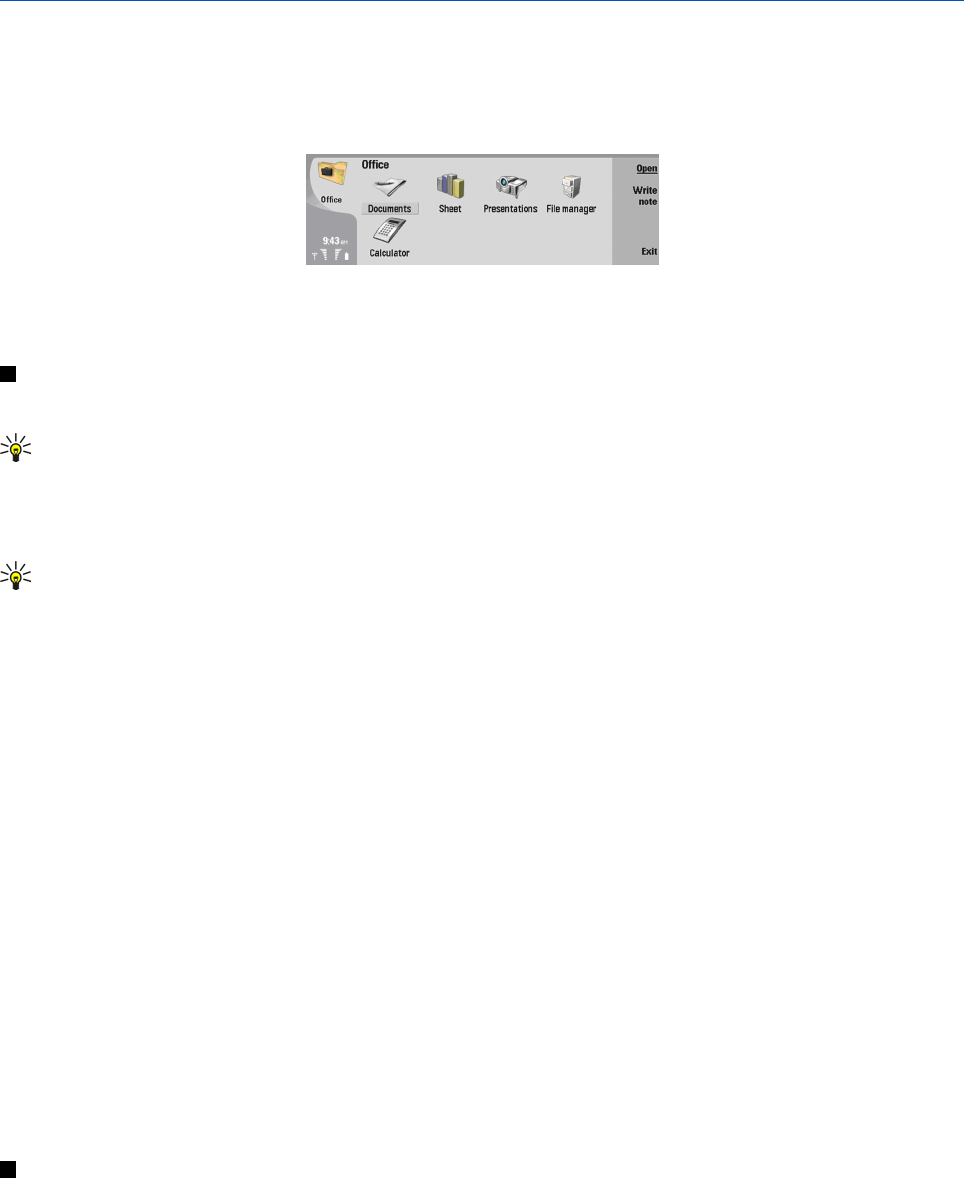
8. Documents
In Documents, you can write new and edit existing text documents. You can insert and view images and other files in the
documents.
Documents is one of the applications available in the Office group. Office also contains Sheet and Presentations applications,
Calculator, and File manager application for file and folder management. To open the Office group, select Desk → Office, and
press Open.
You can open, edit, and save documents created with Microsoft Word for Windows versions 97 and later. Note that not all
features and formatting of the original documents will be supported. The original document must not be password
protected. Documents created with other versions of Microsoft Word may only be viewed.
Working with documents
Move within the document with the scroll key, and select text by pressing Shift+scroll key left right, up, or down.
Tip: The menu contains many options that are familiar from other text editing applications.
To create a new document, open the Documents application and start writing in the new document that is opened , or press
Menu, and select File → New document → Blank document.... Write text or paste it from another document.
To open an existing document, press Menu, and select File → Open.... Browse for the folder where the file is saved.
Tip: To open recently used documents, press Menu, and select File → Recent documents.
To copy or cut selected text, press Menu, and select Edit → Copy or Cut. To paste the text, go to the document where you
want to add the text, press Menu, and select Edit → Paste.
To paginate a document, press Menu, and select Tools → Paginate. This command divides the document into pages and
updates the page numbering.
To insert page breaks or line breaks into a document, press Menu, and select Insert → Page break or Line break.
To count words, press Menu, and select Tools → Word count.
To search for text in the document, press Menu, and select Edit → Find.... Enter the text you are looking for, and press Find.
To refine the search criteria, press Options. To replace the found item with something else, press Replace, enter the
replacement text, and press Replace.
To save and close a document, press Exit. If you have modified the file, press Save to save the document with a default file
name. Press Save as to specify the file name and location, or press Discard changes to close the application without saving
any changes.
To view the structure of a document, press Menu, and select View → Outline.... The document is structured by different levels
of headings. Heading 1 is the top level, Heading 2 comes second, and so on. Body text is not shown in the document outline.
To view more levels in the document outline, press Expand. To hide the lower levels, press Collapse. To jump to a particular
heading in the document, select the heading, and press Go to.
To hide or make text markers visible, press Menu, and select Tools → Preferences.... On the Basic options page, you can define
whether tab, space, and paragraph marks are shown in the document. On the Advanced options page, you can define
whether forced line breaks, nonbreaking spaces, and hard hyphen marks are shown in the document.
To open a particular page in a document, press Menu, and select Tools → Go to page.... In the Go to dialog, you can see how
many pages there are in the document and select a page you want to jump to. Enter the page number, and press Done.
Formatting documents
You can modify the style of a document on a font and paragraph level. You can use different fonts, font sizes, and styles. You
can apply different predefined or user-defined styles by either modifying particular pieces of text separately, or by using a
template on which the style of the text is based.
To format text, select the text, press Menu, and select Format → Font..., Formatting, Bullets..., or Paragraph. Select the
appropriate formatting option. For example, you can add bold, italic, and underline formatting, change the font size and
color, and add bullets and borders.
Copyright © 2004 Nokia. All Rights Reserved. 42


















